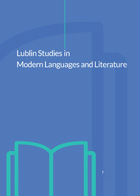Архітектонічна та ідейно-естетична симетрія повісті Наталени Королевої 1313 та роману Умберто Еко Il nome della rosa
The Architectonic and Aesthetical Symmetry in Nathalena Koroleva’s Novel 1313 and Umberto Eco’s Novel The Name of the Rose
Author(s): Ihor NabytovychSubject(s): Literary Texts
Published by: Wydawnictwo Naukowe Uniwersytetu Marii Curie-Sklodowskiej
Keywords: Umberto Eco; Nathalena Koroleva
Summary/Abstract: There is some kind of symmetry between the novel of the Ukrainian writer Nathalena Koroleva 1313 (1934) and the Umberto Eco’s Il nome della rosa (The Name of the Rose, 1980) not only in the historical period, but also in the architectonic of each of them, in the separate elements of their aesthetical meaning, fable conclusions and the system of images (the events which are presented in both novels depict the first half of the XIV century in the Middle Ages monastery where something strange is happening; in each of the novels the monastery is being destroyed because of the fire). Along with that N. Koroleva’s novel is a modernistic project (based on the writer’s outlook – homo religiosus, on the conservative inner world positions). And the U. Eco’s novel is a post-modernistic project (which declares the crisis phenomena of the modern irreligious world, the outlook of the irreligious personality). One of the main expressions, symbols of the asymmetry (which in concrete details tends to the reversed symmetry in the conceptual expressions of the symbols modeling systems that represent the Middle Ages monastery) in the novels of N. Koroleva and U. Eco is the concept of the Devil and the concept of the Dark Ages’ science.
Journal: Lublin Studies in Modern Languages and Literature
- Issue Year: 32/2008
- Issue No: 1
- Page Range: 87-113
- Page Count: 27
- Language: Ukrainian

